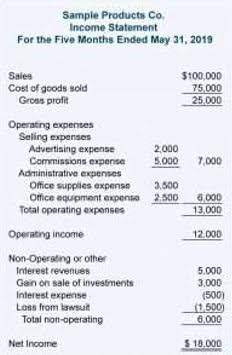
While there is no one “right” inventory valuation method, every method has its own advantages and disadvantages. Here are some of the benefits of using the FIFO method, as well as some of the drawbacks. That means the first 10 shirts you sold were those you bought in January, which cost you $50 each.
What Is the FIFO Method?
To do that, we need to see the cost of the most recent purchase (i.e., 3 January), which is $4 per unit. The inventory balance at the end of the second day is understandably reduced by four units. Calculate the value of Bill’s ending inventory on 4 January and the gross profit he earned on the first four days of business using the FIFO method. On 3 January, https://www.bookstime.com/ Bill purchased 30 toasters, which cost him $4 per unit and sold 3 more units. In this lesson, I explain the FIFO method, how you can use it to calculate the cost of ending inventory, and the difference between periodic and perpetual FIFO systems. During inflationary times, supply prices increase over time, leaving the first ones to be the cheapest.

What’s the difference between FIFO and LIFO?
FIFO means “First In, First Out” and is an asset-management and valuation method in which assets produced or acquired first are sold, used, or disposed of first. FIFO assumes assets with the oldest costs are included in the income statement’s Cost of Goods Sold (COGS). The remaining inventory assets are matched to assets most recently purchased or produced. This is one of the most common cost accounting methods used in manufacturing, and it’s particularly common among businesses whose raw material prices tend to fluctuate over time. FIFO takes into account inflation; if prices went up during your financial year, FIFO assumes you sold the cheaper ones first, which can lead to lower expenses and higher reported profit. FIFO and LIFO have different impacts on inventory management and inventory valuation.
FIFO vs LIFO
This is the opposite of the FIFO method and can result in old inventory staying in a warehouse indefinitely. FIFO, or First In, First Out, assumes that a company sells the oldest inventory first. Therefore the first batch of inventory that they order is also the first to be disposed of, leading to a steady inventory turnover. Although a business’s real income and profits are the same, using FIFO or LIFO will result in different reported net income and profits.
- The opposite of FIFO is LIFO (Last In, First Out), where the last item purchased or acquired is the first item out.
- LIFO usually doesn’t match the physical movement of inventory, as companies may be more likely to try to move older inventory first.
- Notice that Susan lists the 130 units remaining in her inventory as costing $4 apiece.
- FIFO is the more straightforward method to use, and most businesses stick with the FIFO method.
- In normal economic circumstances, inflation means that the cost of goods sold rises over time.
- However, International Financial Reporting Standards (IFRS) permits firms to use FIFO, but not LIFO.
- It’s required for certain jurisdictions, while others have the option to use FIFO or LIFO.
Pro: Often reflects actual inventory movement
FIFO, which stands for “first-in, first-out,” is an inventory costing method that assumes that the first items placed in inventory are the first sold. Thus, the inventory at the end of a year consists of the goods most recently placed in inventory. The inventory methods used by the companies whose stock is publicly traded are under the Summary of Significant Accounting Policies Form 10-K. The Summary of Significant Accounting Policies appears as the first or second item in the Notes section of the financial statements. Companies use the method to evaluate the cost of goods sold (COGS) and inventory value.
The FIFO method assumes that the oldest items in inventory are sold first, meaning the cost of goods sold is based on the oldest inventory items. The FIFO method impacts how a brand calculates their COGS and ending inventory value, both of which are always included on a brand’s balance sheet at the end of a financial accounting period. Under FIFO, the brand assumes the 100 mugs sold calculate fifo come from the original batch. Because the brand is using the COGS of $5, rather than $8, they are able to represent higher profits on their balance sheet. Assume a company purchased 100 items for $10 each, then purchased 100 more items for $15 each. Under the FIFO method, the COGS for each of the 60 items is $10/unit because the first goods purchased are the first goods sold.
- Assuming that prices are rising, this means that inventory levels are going to be highest as the most recent goods (often the most expensive) are being kept in inventory.
- In the FIFO Method, the value of ending inventory is based on the cost of the most recent purchases.
- Use QuickBooks Enterprise to account for inventory using less time and with more accuracy.
- Also, LIFO is not realistic for many companies because they would not leave their older inventory sitting idle in stock while using the most recently acquired inventory.
- Unless you’re using a blended-average accounting method like weighted average cost, you’re probably going to need a way to track, sort, and calculate all your individual products or batches.
- Three units costing $5 each were purchased earlier, so we need to remove them from the inventory balance first, whereas the remaining seven units are assigned the cost of $4 each.
Accounting Crash Courses

Gross income is calculated by subtracting the cost of goods sold from a company’s revenue for a given period. Therefore, when COGS is lower (as it is under FIFO), a company will report a higher gross income statement. Cost of Goods Sold, or COGS, is the amount of money a business pays to produce the number of goods sold in a given period. The products that are left in the warehouse are called remaining inventory. Good inventory management software makes it easy to log new orders, record prices, and calculate FIFO.
Specific inventory tracing
On the basis of FIFO, we have assumed that the guitar purchased in January was sold first. The remaining two guitars acquired in February and March are assumed to be unsold. Suppose the number of units from the most recent purchase been lower, say 20 units. We will then have to value 20 units of ending inventory on $4 per unit (most recent purchase cost) and the remaining 3 units on the cost of the second most recent purchase (i.e., $5 per unit). Now that we have ending inventory units, we need to place a value based on the FIFO rule.



